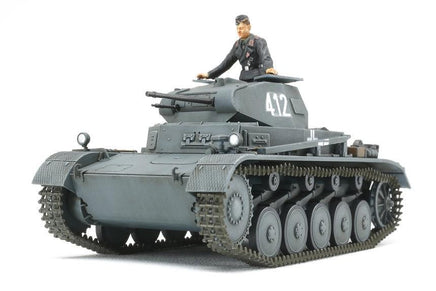Skip to product information


In the mid 1930s, the German military pushed the production of tanks. The Panzer I designed as a training tank, did not have the adequate performance, so a light tank was needed to fill the gap until the Panzer III could be introduced. Therefore, the German Ordnance Department issued a request for a new training tank that could be used for combat. In the end, MAN was chosen in 1934 to produce the Panzer II, a compact 4.8m long, 2.2m wide design with a three-man crew. The 8.9-ton tank featured a 2cm Kwk 30 L/55 cannon and 7.92mm machine gun in the turret, 15mm armor protection for turret and hull front, leaf spring suspension, and a 140hp Maybach HL 62 TRM engine matched with a ZF SSG46 transmission, which gave it a 40km/h top speed. The Ausf. A was produced from 1937, followed by the Ausf. B and C, which were difficult to distinguish from each other visually. About 1,100 Panzer tanks were produced by April 1940, and due to delays with the Panzer III, they were immediately issued as the Panzer divisions" main tank for the invasion of Poland in September 1939. Based on lessons learned on the battlefields of Poland and, in May 1940, France, improvements such as extra armor and a turret cupola were added, and the Panzer II went on to serve in North Africa and Russia in front line and liaison and reconnaissance duties until the end of 1943. Afterwards, they were used to police occupied territories and the chassis was also adapted for use as the basis for various self-propelled gun designs.
